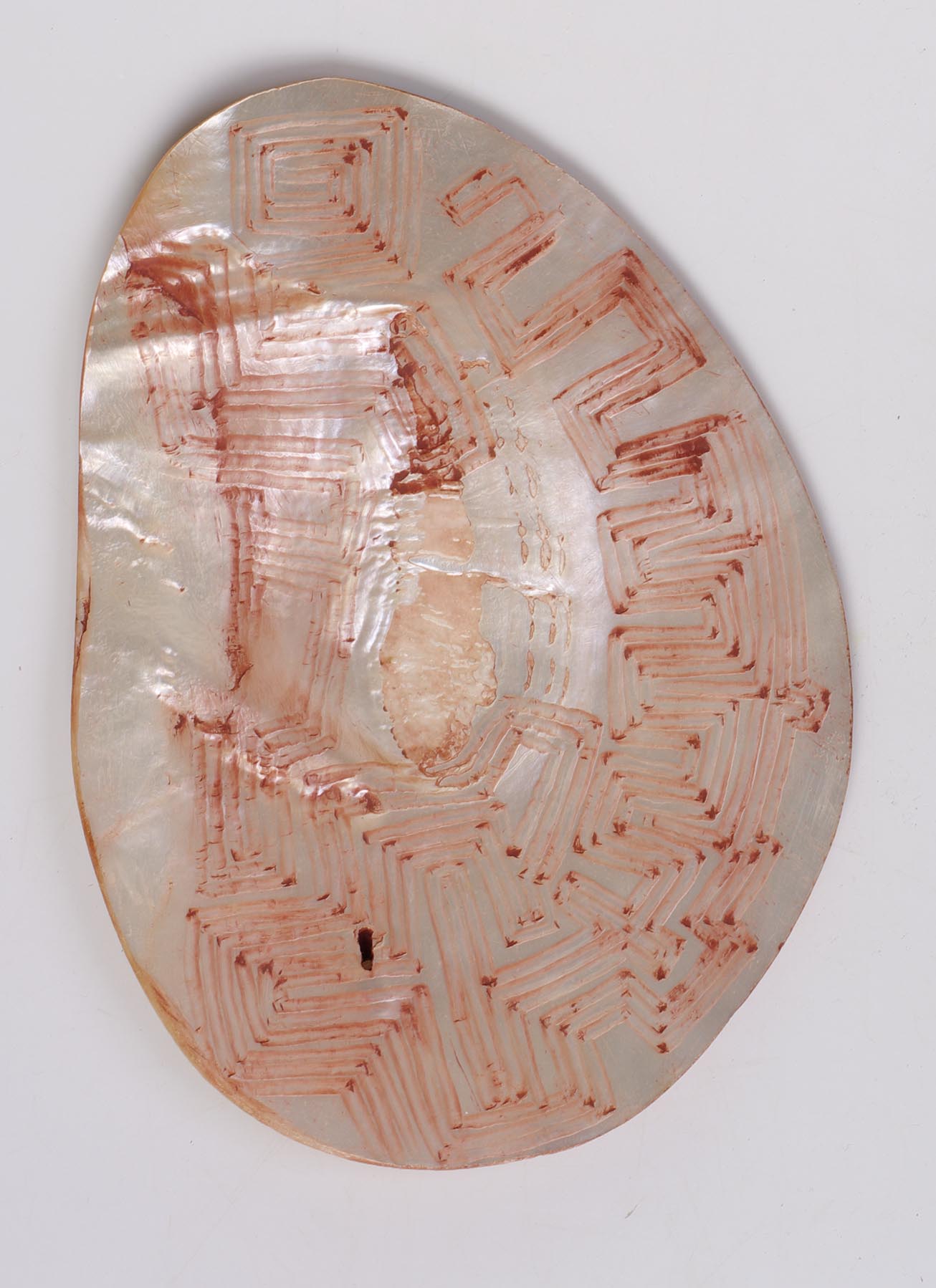28 June 2012 - 3 February 2013
Curated by Diana Young

In the red is the inaugural exhibition in the new purpose built UQ Anthropology Museum Gallery on level 1 in the multi-million dollar refurbishment of the Michie Building at UQ’s St Lucia campus in Brisbane.
The UQ Anthropology Museum, like many ethnographic collections, is bursting with items that might be distinguished as ‘red’; things made with feathers, ochres, seeds, shells and the red cotton cloth known as ‘trade cloth’.
There are synthetically derived reds, red from the earth and digital reds. Red things have been highly valued in a multitude of societies and widely traded.
The exhibition focuses on the rare feather money made by Santa Cruz islanders to obtain wives, highly prized red ochres used to coat both human bodies and artefacts in many Indigenous Australian societies, red shell money, red consumables, such as betel nut. Red cotton cloth was used by European colonists as an exchange item because it was so novel, bright and desirable to many colonized peoples. The social value of all these things, for their makers, lay in their redness.
The exhibition displays more than 360 objects. You can discover some for yourself in the gallery’s new drawer units. The exhibition will change with some new objects appearing throughout the duration of the show. There is work specially commissioned from artist Fiona Foley using shields from her country of Fraser Island. Jennifer Deger’s film born from collaborative film-making with Yolngu in north east Arnhem Land, new work by Ryan Presley, Sally Mulda’s paintings about contemporary life in Alice Springs town camps, Niningka Lewis woven grass tea set and painted bark cloth made by Omie women artists. The exhibition includes things from the Museum’s founder Dr L. P. Winterbotham’s own collection that dates from the early twentieth century. There are some important bark paintings from east and central Arnhem Land. There are things that were once red or might become red. There are red consumables, body wear, the spectacular red feather money. There are quantities of red ochred boomerangs, shields, clubs, spear throwers and women’s carrying dishes made by many unknown Indigenous individuals. There are red masks, trumpets drums and sculptures from the Pacific, red shoes, a head dress made from red corned beef packaging and much more.
View full photo gallery on Flickr: In the Red; on the vibrancy of things
Acknowledgements
Special thanks to Lesley Bryant, Bob MacLennan, Jean Herbert, Cathleen Carman and Gertrude Stotz for their generosity and to Fiona Foley and Jennifer Deger for generously making work especially for the exhibition.
Banner image: Bark cloth (left to right): Ivy-Rose Sirimi, The Forbidden Tree of Lawe’s Parotia, Ömie Mountains and Beaks of Blyth’s Hornbill, 2011 | Maker(s) unrecorded, bark cloth, before 1940 | Aspasia Gadai (Yewo), Ömie Mountains and Beaks of Blyth’s Hornbill, 2010 | Maker(s) unrecorded, Man’s bark cloth skirt, 1975 | Makinti Minutjukur, Untitled batik, c 1982 | Maker(s) unrecorded, Bark cloth, before 1950 | Maker(s) unrecorded, Singo / Mat, late 19th century | Maker(s) unrecorded, Woman’s bark cloth skirt, before 1950 | Maker(s) unrecorded, Neigajang / Woman’s bark cloth skirt, before 1950


